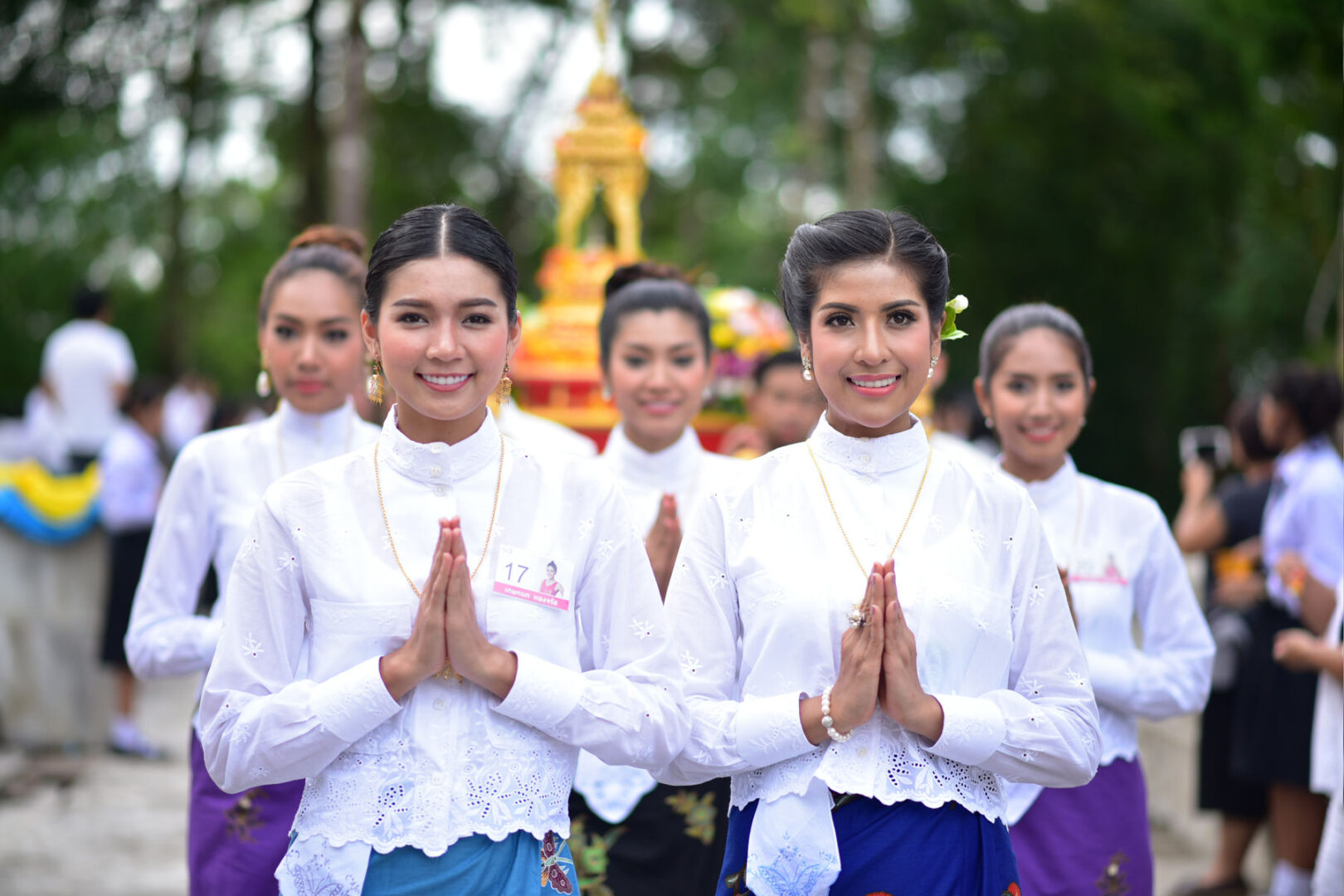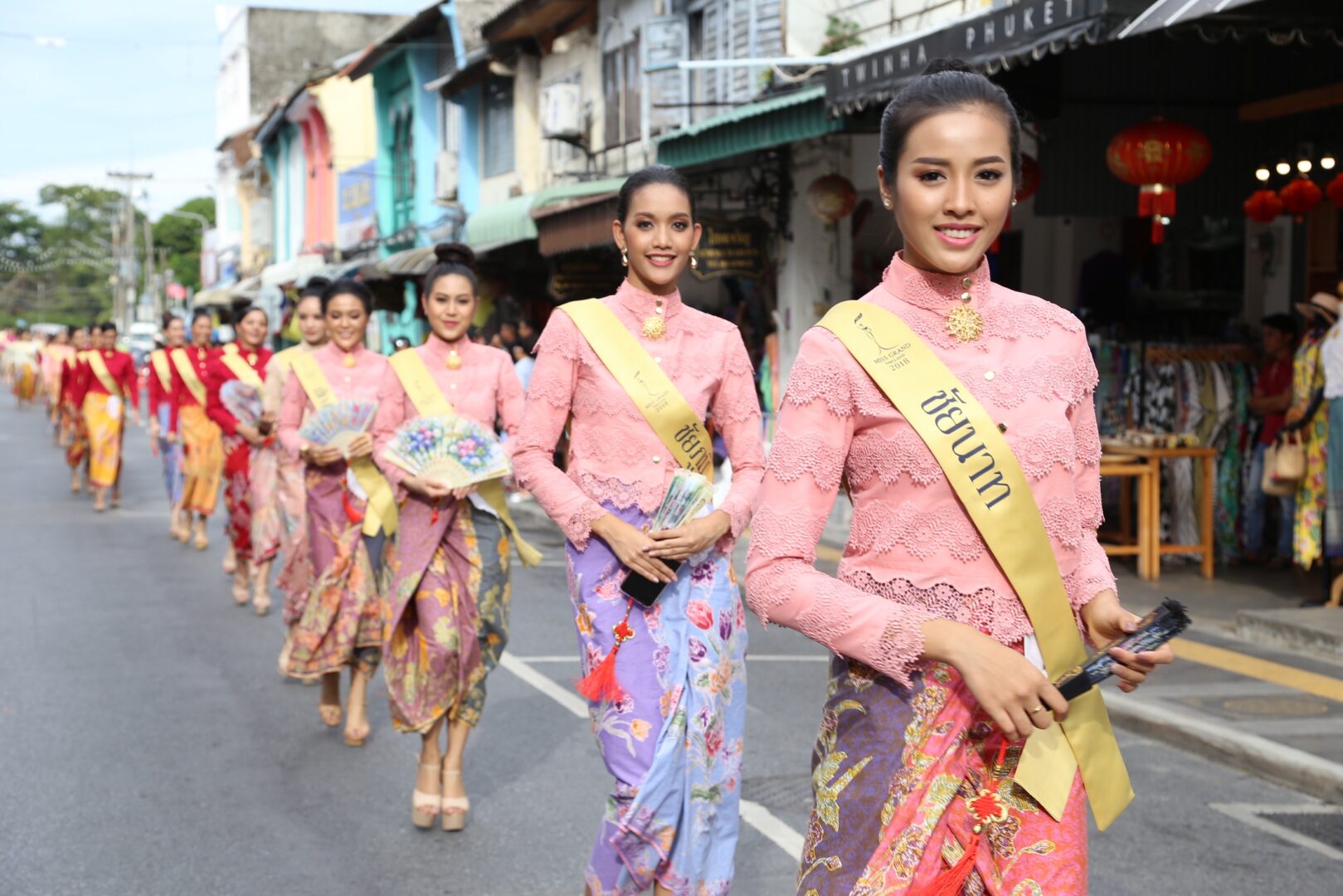Baba-Nyonya
Phuket blends the cultures of its indigenous people, Chinese, Indian, and Westerners, leading to the emergence of a cross-cultural phenomenon in Phuket province. This fusion is evident in language, architectural styles, attire, and cuisine, showcasing the beautiful amalgamation of various ethnicities. For instance, in terms of attire:
Originally, the Baba-Nyonya attire consisted of a high-necked blouse, cuffed sleeves, and a long skirt covering the ankles. However, as the attire became more prevalent in the hot climate of Phuket, adjustments were made, resulting in a shorter skirt that reached only the waist, leading to the creation of the “kebaya” ensemble.
In the early days, it was called the “kebaya linda,” featuring embroidered floral patterns on the blouse, often assumed to be influenced by the embroidery and handwoven fabric production from Holland or the Netherlands before evolving into “kebaya biku.” This version added lace trimmings to the blouse edges using technology and machinery, further evolving into “kebaya sulam,” incorporating intricate local embroidery and embellishments.
The Baba-Nyonya attire is often characterized by vibrant colors and contrasting fabric pouches, making it distinctive and unique. The fabric patterns also contribute to the beauty of Baba-Nyonya attire, spreading its popularity across various regions in Thailand. To adapt to modern times, many women now pair the Baba or Nyonya blouse with trousers or skirts, enhancing daily convenience while still showcasing their unique style in clothing, ensuring that their attire remains unparalleled.
The most common occasions to witness Baba-Nyonya attire are weddings, particularly those of Peranakan couples. In these weddings, the bride wears the Baba-Nyonya attire with all traditional accessories, while the groom dons a suit and leather shoes, adorned with a pin and a corsage made of rabbit fur, signifying his role as the groom.






The “Baba wedding ceremony” or “Peranakan wedding ceremony” is a Chinese-style wedding ceremony in Phuket that has been preserved for over 100 years. It remains a prominent feature of the local Phuket-Chinese culture, serving as a tribute to ancient traditions and honoring the bride and her family’s confidence in the groom’s ability to care for the bride’s happiness. The engagement, known as “phaang ter,” involves inviting senior relatives to drink tea, while the “turning the pillow” ceremony signifies the groom’s journey into the bride’s room, guided by a “mama” or an elder mediator. These ceremonies, reflecting the couple’s previously limited face-to-face interaction, continue until the wedding day.
The uniqueness of the Baba wedding ceremony encompasses various aspects. Starting with the attire of the bride and groom, the groom’s attire reflects wealth and his business dealings with foreign companies. The bride wears a traditional Phuket-style wedding gown, known as “punjabi.” It is a long dress with an inner blouse featuring a white lotus pattern, puffed sleeves, paired with a “baju kurung” made of local silk or muslin cloth, embroidered with intricate patterns. The colors are usually in harmony with the blouse fabric. She wears family heirloom jewelry, including a large brooch called a “kosang,” with three smaller pieces worn as anklets, completing her attire. The hairstyle is also distinctive, known as “song chak ee boi” and most importantly, the bride must wear a golden crown called a “dok mai wai,” made up of 144 pins obtained from relatives, symbolizing prosperity and commitment. The crown is adorned with swans or phoenixes, significant birds with melodious voices, symbolizing the bride’s gentle demeanor and her ability to nurture and care for her husband.
While some aspects of Phuket-Peranakan culture may have evolved over time to adapt to contemporary norms, they remain deeply rooted in Phuket’s heritage, undergoing changes only to align with modern cultural practices.



